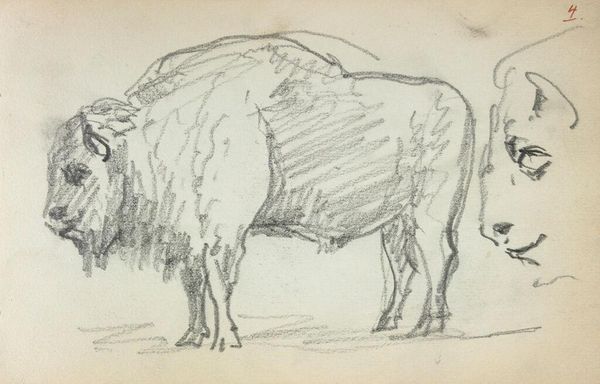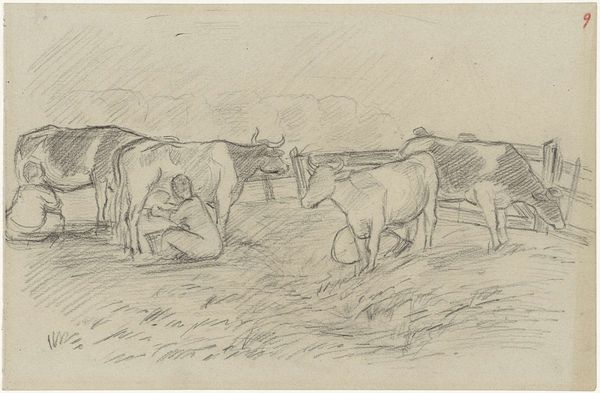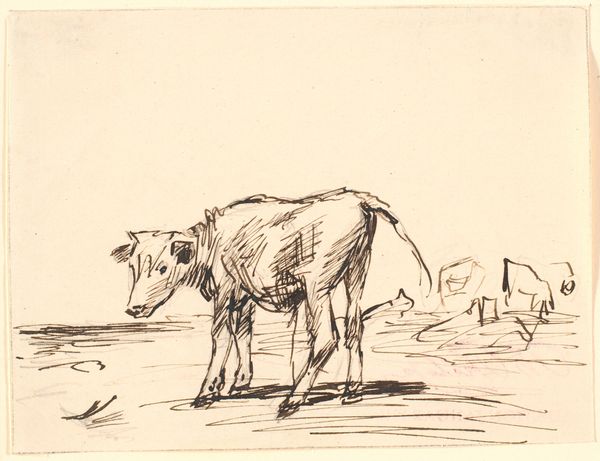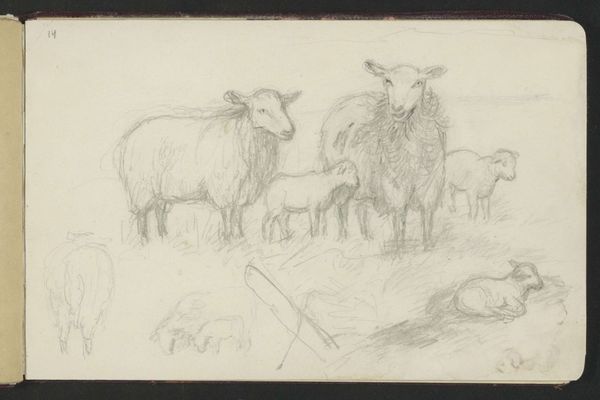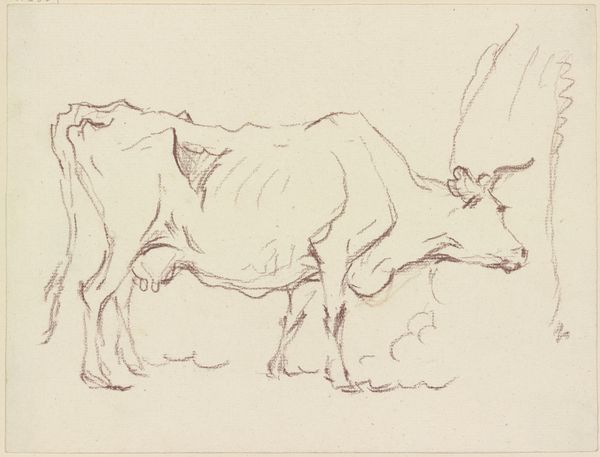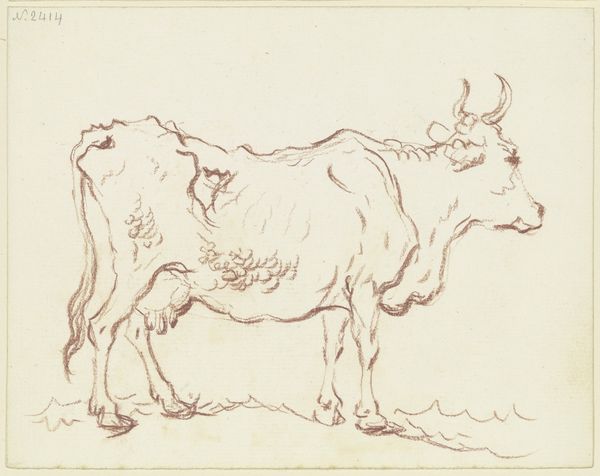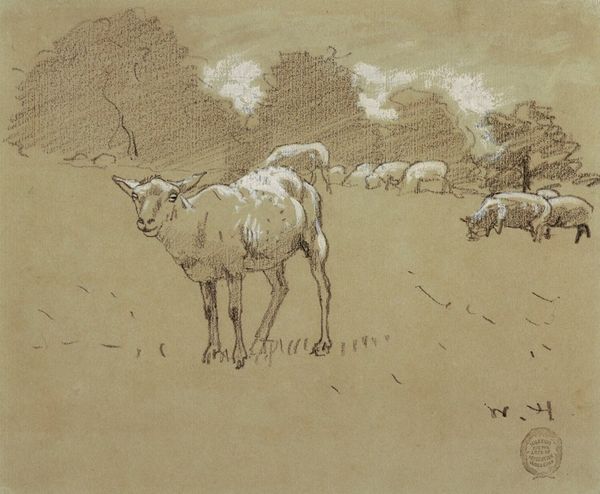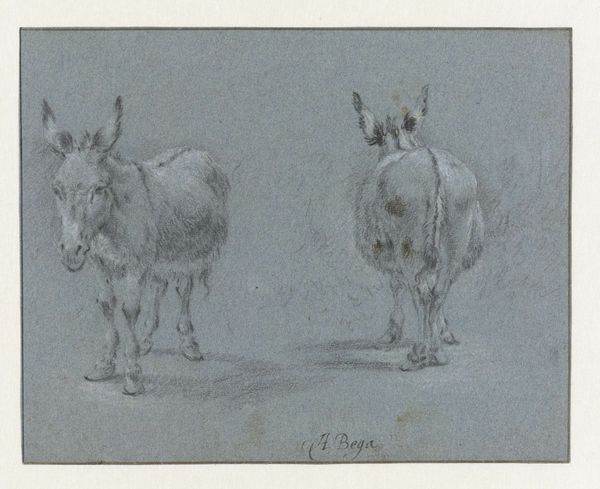
drawing, pencil, pastel
#
drawing
#
pen sketch
#
pencil sketch
#
landscape
#
figuration
#
pencil
#
pastel
Dimensions: height 226 mm, width 290 mm
Copyright: Rijks Museum: Open Domain
Curator: Welcome. We’re standing before “Schaap met twee lammetjes,” or "Sheep with Two Lambs," a pencil, pastel and pen drawing created between 1864 and 1936, by Jan van Essen. Editor: The drawing's monochrome palette certainly evokes a sense of pastoral quietude. It’s remarkable how just a few strokes capture the essence of these creatures. There’s a definite compositional hierarchy, the ewe is centered and grounded, anchoring the two more whimsical, less resolved, lambs. Curator: The sheep is an ancient symbol deeply interwoven with themes of innocence, purity, and sacrifice. In numerous cultures and religions, they often embody gentleness and vulnerability. Consider the iconic imagery of the Good Shepherd—a protector of the flock, symbolizing guidance and care. Editor: But what of the line itself? Note how Van Essen employs hatching to sculpt form and shadow. It’s fascinating how, despite its apparent simplicity, the work isn’t photorealistic at all. We have these rapidly rendered lambs which seem to fade almost into the backdrop... it's a work of deliberate contrast. Curator: Lambs themselves symbolize new beginnings and rebirth, particularly resonant in spring festivals like Easter. Their presence here could allude to themes of hope, renewal, and the cyclical nature of life. The intimate grouping creates a strong emotional connection. Editor: Yet, if we detach the representational for a moment, isn’t this a powerful exercise in reduction? Look at the masterful economy of line. Each stroke feels considered, contributing to the overall textural feel and volume. The composition doesn't attempt to emulate nature so much as interpret its innate visual rhythm. Curator: The artwork also brings to mind the enduring connection between humanity and the natural world. Throughout history, agrarian societies have depended on sheep for sustenance and resources. Editor: In that sense, does the formal elegance inadvertently abstract something inherent in its social context? A visual argument can be made that its structure privileges the purely visual… rendering something of social reality indistinct. Curator: Interesting, well, hopefully we’ve given you a way to examine the relationship between the artwork's symbolism and its structural form. Editor: Indeed. And through them perhaps arrive at new ways of seeing the world.
Comments
No comments
Be the first to comment and join the conversation on the ultimate creative platform.
